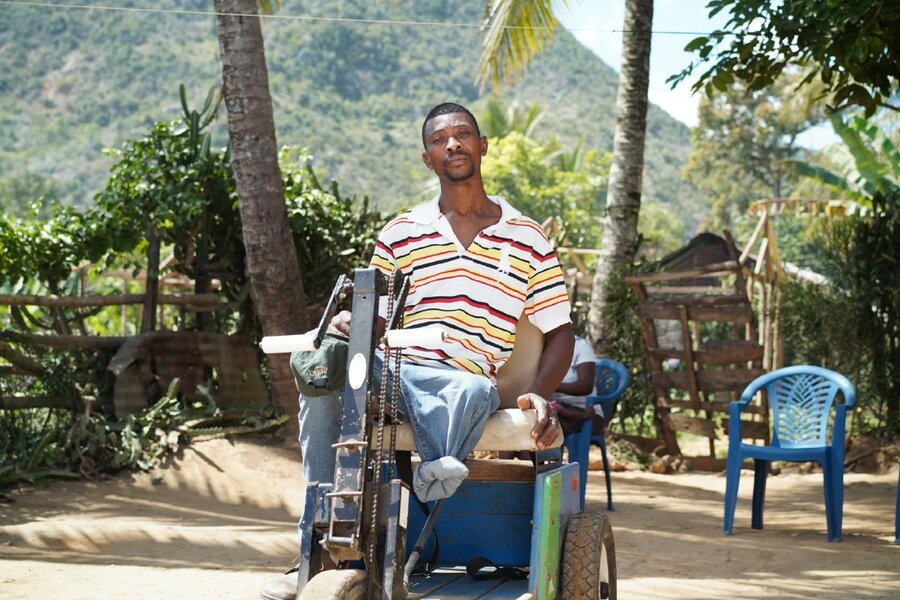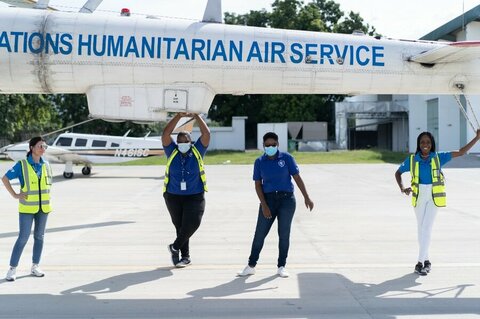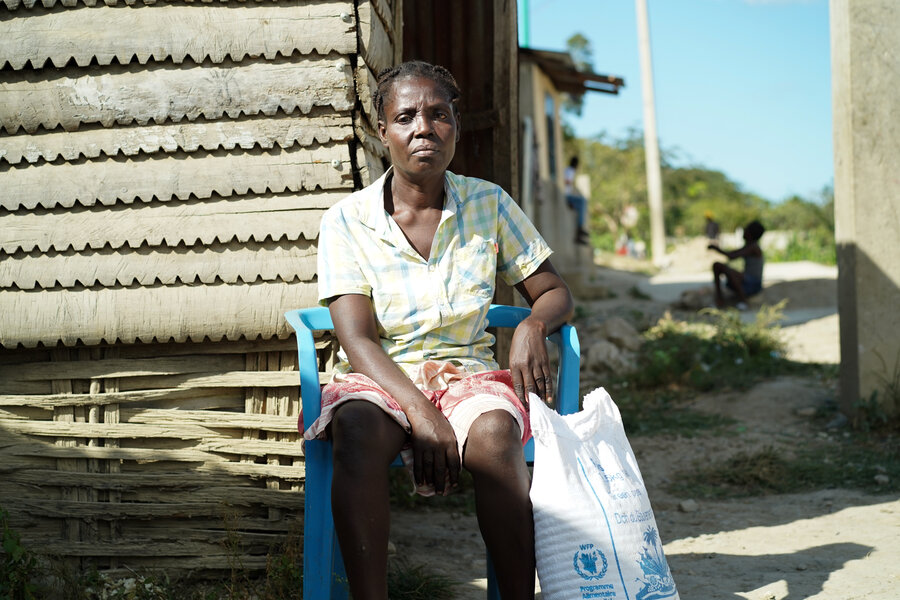Haiti: Coronavirus, high food prices and how beans became a luxury

The scale of need in Haiti is truly striking. In this Caribbean country of more than 11 million people, close to half of the population faces hunger, and one in five children suffers from chronic malnutrition.
Figures from the World Food Programme (WFP) suggest 4.4 million Haitians need immediate food assistance, and among these, 1.2 million people suffer severe hunger.
Spiralling food prices, worsened by the COVID-19 pandemic and its related restrictions, are a key factor. In fact, WFP's latest ‘Cost of a Plate of Food’ report reveals that a meal costs a working person in Haiti 35 percent of their income. That’s like someone in New York State paying US$74 for their lunch.
It is little wonder, therefore, that people here fear hunger more than the virus itself, as two residents we spoke to reveal.
Rosena’s story
Rosena is the mother of six children and does not have a stable job. While she used to farm a small plot, she says she is now too weak to continue such backbreaking work in the scorching heat.
On a good week, she might scrape by with 150 or 200 Haitian gourdes (US$2-3) by doing laundry runs for her neighbours. But she says she cannot spend less than 125 gourdes a day to feed herself. “I remember a small cup of rice being 40 gourdes at the market. Now, you can’t find it for less than 50,” she says.
Meet the four women behind WFP’s humanitarian helicopter in Haiti

Last year, Rosena lost her husband to an illness. She describes how he suddenly had a strong fever and a debilitating headache, and collapsed after gasping for air. He was the only one still capable of doing physical work.
This is the first time that Rosena has needed food assistance from WFP and the Government. At the distribution site, she was given a bag each of rice and peas, and a bottle of vegetable oil, which she brought home on a moto-taxi.

“I will save the food that WFP gave to me as much as I can,” says Rosena. “With God’s help, things will get better, and I hope one day I have a better house that doesn’t get wet when it rains.”
Although food prices decreased at the end of 2020, they are now rising again, making it harder for the poorest people to feed themselves — especially given that 70 percent of Haitians report having lost their jobs and income.
In February, WFP distributed rice, peas and vegetable oil to 1,400 families in Dondon, as part of a large-scale food assistance programme to support 700,000 people hit by the economic fallout of the COVID-19 pandemic.
René’s story
René used to drive passengers around his village of Dondon on his motorbike. Then, following a road accident, he had to have a leg amputated. Since then, René and his wife Jocelyne have struggled to ensure nutritious food for their three boys.
Jocelyne has found it harder than ever to get a stable job — unemployment has doubled to 32 percent in the past year. So she buys and sells vegetables and spices when she can.
This brings in US$6 (500 Haitian gourdes) in an average week and US$9-10 in a good week.
However, René says it costs US$4 to feed the family for a day, with just some rice and black beans. Food assistance from WFP is a lifeline.
The couple sometimes rely on neighbours’ solidarity for food. They want the freedom to choose what they consume.
“I wish I could buy tastier food,” says René. “Meat, vegetables … but even rice and beans are usually out of reach.”
Urgent funds
WFP is expanding its emergency programmes to reach 900,000 of the most vulnerable Haitians with food and cash-based assistance, in partnership with the Government.
This year the organization has reached 230,000 of the most vulnerable people with food rations or cash — every day a WFP helicopter takes critical assistance and humanitarian personnel to remote locations. WFP delivers such assistance in both rural areas and the most food-insecure urban areas of Port-au-Prince and Gonaives.
WFP needs US$3 million to sustain its Humanitarian Air Service through the end of 2021.
WFP's food assistance in Dondon is led by the Government of Haiti with funding from the Inter-American Development Bank.
